Fujifilm Fujinon XF 16-80 mm f/4 R OIS WR
5. Chromatic and spherical aberration
Chromatic aberration
The Fujinon XF 16–80 mm f/4 R OIS WR doesn't have any problems with correction of longitudinal chromatic aberration as out-of-focus images are free of any colouring. Still, you have to admit none lens in this group had any problems in this category.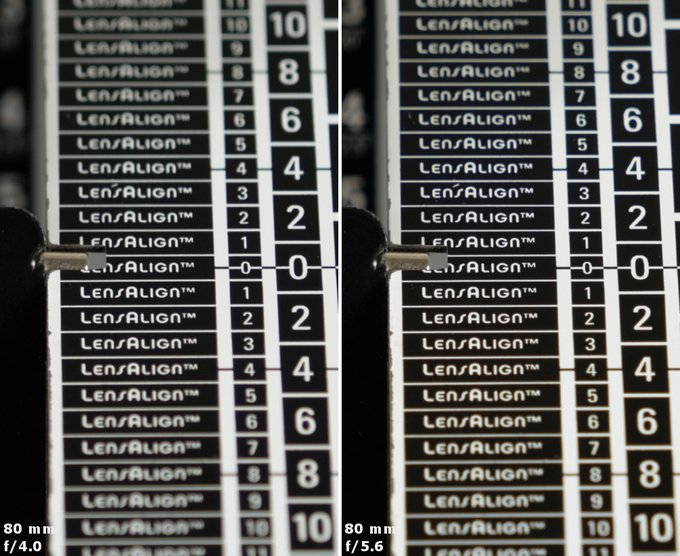 |
Now let's check how the tested lens deals with the correction of lateral chromatic aberration. Below you can find a graph that shows a correlation between CA, focal length and aperture values.
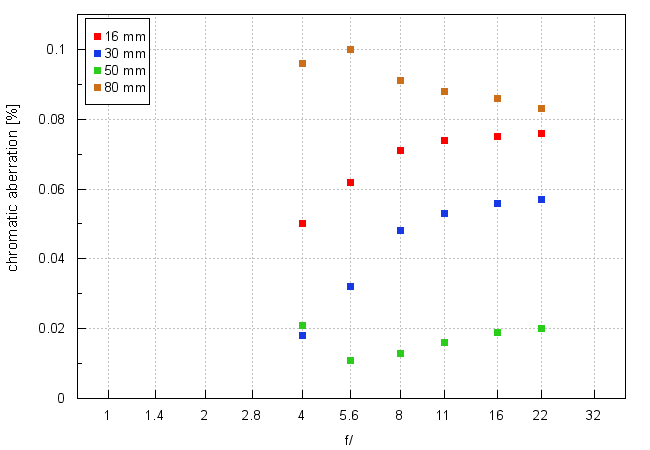
Please Support UsIf you enjoy our reviews and articles, and you want us to continue our work please, support our website by donating through PayPal. The funds are going to be used for paying our editorial team, renting servers, and equipping our testing studio; only that way we will be able to continue providing you interesting content for free. |
- - - - - - - - - - - - - - - - - - - - - - - - - - - - - - - - - - - - - - - - - - - - - - - -
The best results you see in the middle of the focal range. At 50 mm the lateral chromatic aberration amounts to practically zero and at 30 mm it increases on stopping down but remains low even if you stop down the lens a lot. At the shortest focal length the aberration increases slightly from low to a level approaching medium values and at 80 mm you deal with medium values only.
In this category the Fujinon compares really favourably with its rivals. It outdistances the Nikkor AF-S DX 16–80 mm f/2.8–4E ED VR, which at the maximum relative aperture reached a level of 0.12% and at the shortest focal lengths didn't fare better than the Fujinon. In this category the shortest focal length was a weak spot of the Canon and the Sigma – their maximum results could approach 0.15%, a value which we consider to be high. The Fujinon didn't experience such problems and it should be praised for that.
| Fujifilm X-T2, RAW, 50 mm, f/5.6 | Fujifilm X-T2, RAW, 80 mm, f/5.6 |
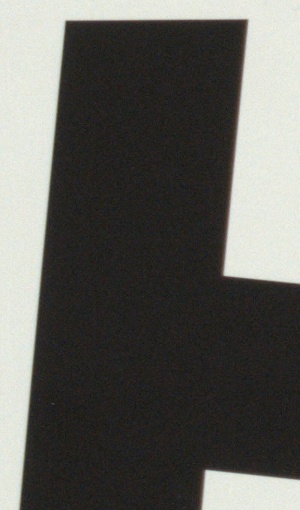
|
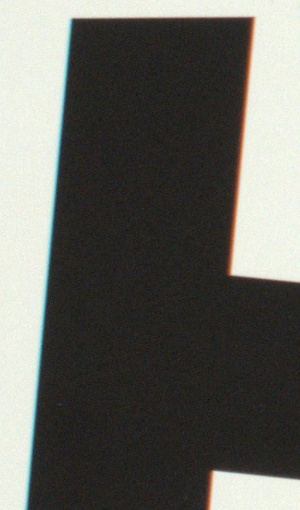
|
Spherical aberration
In first photos of this chapter you can notice 'focus shift' effect. It's nothing prominent, visible mainly as a shift of depth of field toward greater distances when you stop down the aperture from f/4.0 to f/5.6, but it means the lens doesn't correct spherical aberration in a perfect manner. The appearance of out-of-focus light circles we got before and after the focal point confirms that. Both at 50 and 80 mm the pairs of circles aren't the same – their rims differ, a classic symptom of a tad weaker correction of spherical aberration.
| Fujifilm X-T2, 50 mm, f/4.0, in front of | Fujifilm X-T2, 50 mm, f/4.0, behind |
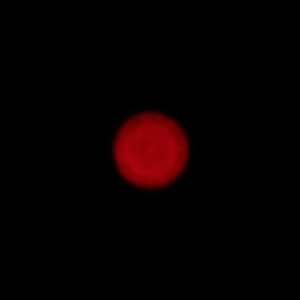
|
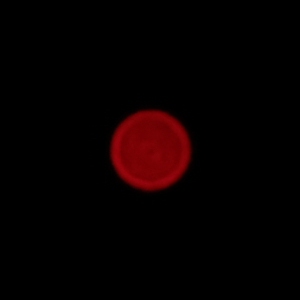
|
| Fujifilm X-T2, 80 mm, f/4.0, in front of | Fujifilm X-T2, 80 mm, f/4.0, behind |
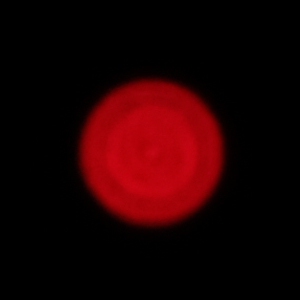
|
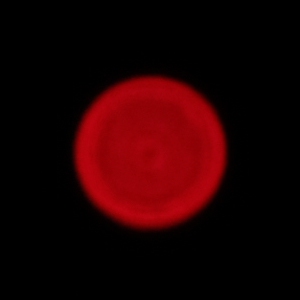
|






